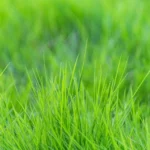
The pear tree is a deciduous tree in the rose family. This plant is native to Europe and Asia. Pear cultivation began in China 1134 years ago. Today, over 3000 varieties of pears can be found all over the world. Pears prefer a temperate climate, plenty of sunlight, and well-drained soil. They are primarily grown for their delicious fruit, which has numerous health benefits. Aside from human consumption, pear is used in the manufacture of furniture, musical instruments, and kitchen utensils. Some pears are grown for their ornamental value.
Interesting facts about Pears:
Pear trees can reach heights of 39 to 49 feet. The crown is pyramid-shaped.
Pear has green leaves that are oval or heart-shaped and alternately arranged on the branches.
Pear flowers are white or pink. Flowers, despite having both types of reproductive organs (stamens and pistils), cannot self-pollinate. Insects are the most important pollinators of flowers.
Pears have round, oval, or conical fruit with yellow, green, or reddish skin. The flesh is white or creamy in color and contains stone cells.
Fruit is harvested while it is still green because it continues to ripen after being removed from the tree. In this manner, pear producers prevent pears from becoming overripe before they are available in supermarkets around the world.
Pears are high in fiber, vitamins C and K, and minerals like copper and potassium.
Pear can be eaten raw or in fruit salads, cakes, and other desserts. Pear is easily digestible, which is one of the reasons why it can be eaten by babies (in the form of pear puree).
Pears, due to their high vitamin content, can help the immune system function better. A high fiber content aids digestion, while a high sugar content boosts energy levels. Pear promotes calcium absorption and may help prevent osteoporosis.
Chinese people believe that sharing pears can strain friendships or romantic relationships. In China, pears are a symbol of immortality.
Before tobacco became popular, pear leaves were used to make cigarettes.
Pears are also known as “butter fruit” because when ripe, they have a soft, butter-like texture.
Pears were an important part of the ancient Greek diet and a remedy for nausea. Pears were described as “gifts of the gods” by the Greek poet Homer.
Pear wood is used in the production of furniture and kitchen utensils because it does not absorb food odors and colors and can withstand repeated washings.
People who are allergic to birch and alder pollen frequently develop allergies to pear pollen.
Four years after planting, pear trees begin to bear fruit. Depending on the variety, plants can live for 10 to 50 years.










I can’t help but leave a comment to applaud your blog post. Your writing style is engaging, and your storytelling abilities are exceptional. The way you seamlessly blend informative content with captivating narratives is a true art. I found myself immersed in your words from start to finish. Your blog is a hidden gem that deserves wider recognition. Thank you for providing such an enjoyable and enlightening reading experience.